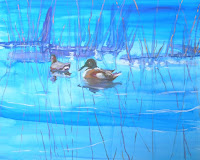 Here it is, the first public award I have received that relates to my art. The Lemonade Award, presented to me by fellow painter and friend, Celeste Bergin.
Here it is, the first public award I have received that relates to my art. The Lemonade Award, presented to me by fellow painter and friend, Celeste Bergin.Last fall, Celeste and I challenged one another and ourselves with a painting a day goal. The only rules were that we had to finish a painting and send one another a jpeg by 9:00 pm. Every day. We also posted those jpegs on our blogs. Celeste is a dedicated painter and her drive and dedication to her art inspires me. I check her blog frequently to see what she is painting. She has posted many comments on my blog and encouraged me to paint more and paint better.
So, here's to Celeste with thanks and heart felt gratitude. Thank you.
Here are the guidelines that award winners must follow:
#1 Link back to the person who gave you the award
#2 Place the award jpeg onto your blog
#3 Nominate 10 bloggers who are deserving of this award!
(if you have been tagged with the award previously and I give it to you..no worries...carry on!)
#4 Let the winners know they have received the award by leaving a comment on their blogs
My nominees:
Maeona Urban
Jonathan Farley
Lloyd Williams
Portland Plein Air and Studio Painters
John Holland



































